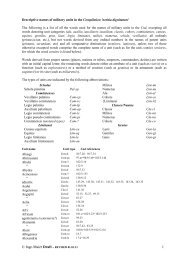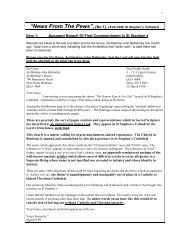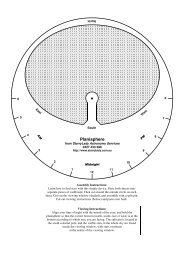Introduction to regression
Introduction to regression
Introduction to regression
You also want an ePaper? Increase the reach of your titles
YUMPU automatically turns print PDFs into web optimized ePapers that Google loves.
Chapter 3 <strong>Introduction</strong> <strong>to</strong> <strong>regression</strong> 123<br />
Interpretation, interpolation and<br />
extrapolation<br />
Interpreting slope and intercept (m and b)<br />
Once you have a least-squares <strong>regression</strong> line, the slope and intercept can give important<br />
information about the data set.<br />
The slope (m) indicates the rate at which the data are increasing or decreasing.<br />
The y-intercept indicates the approximate value of the data when x = 0.<br />
WORKED Example<br />
5<br />
In the study of the growth of a species of bacterium, it is assumed that the<br />
growth is linear. However, it is very expensive <strong>to</strong> measure the number of<br />
bacteria in a sample. Given the data listed below, find:<br />
a the rate at which bacteria are growing<br />
b the number of bacteria at the start of the experiment.<br />
Day of experiment 1 4 5 9 11<br />
Number of bacteria 500 1000 1100 2100 2500<br />
Continued over page

















